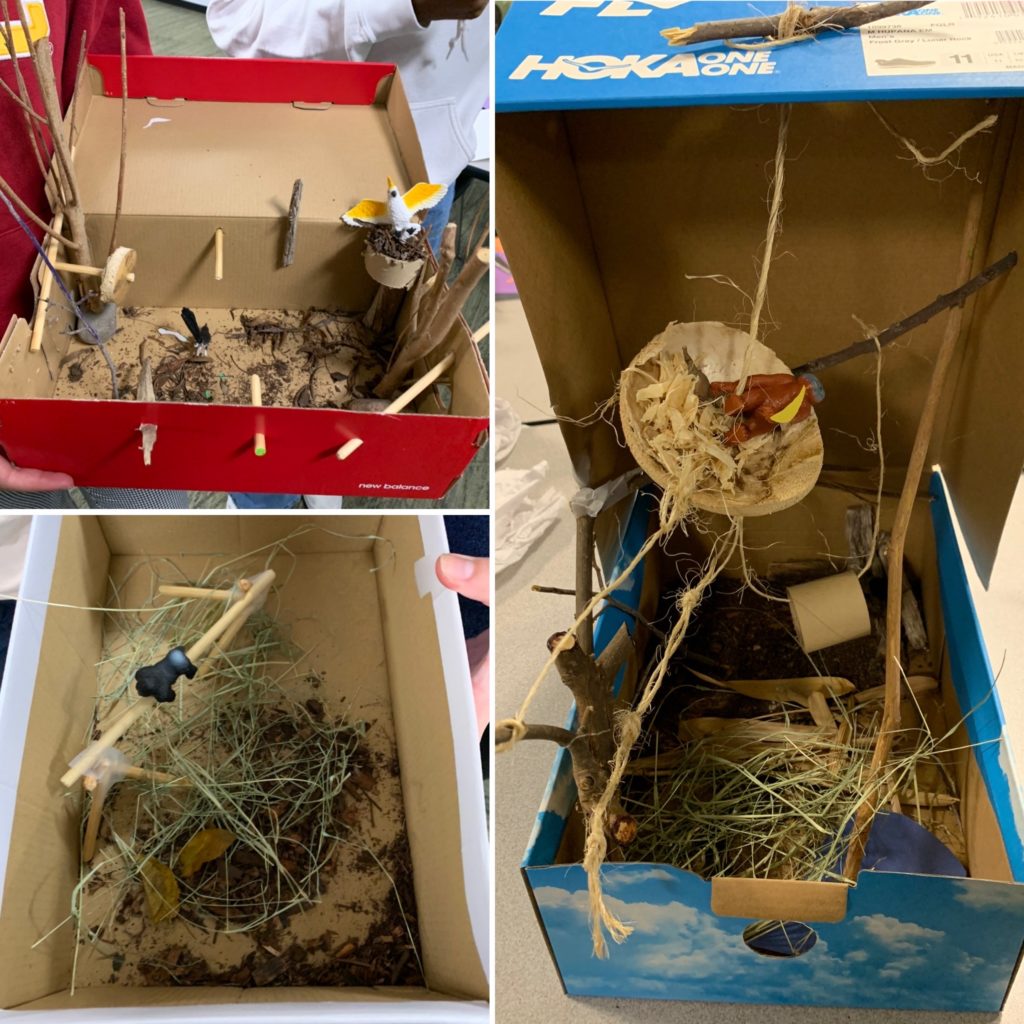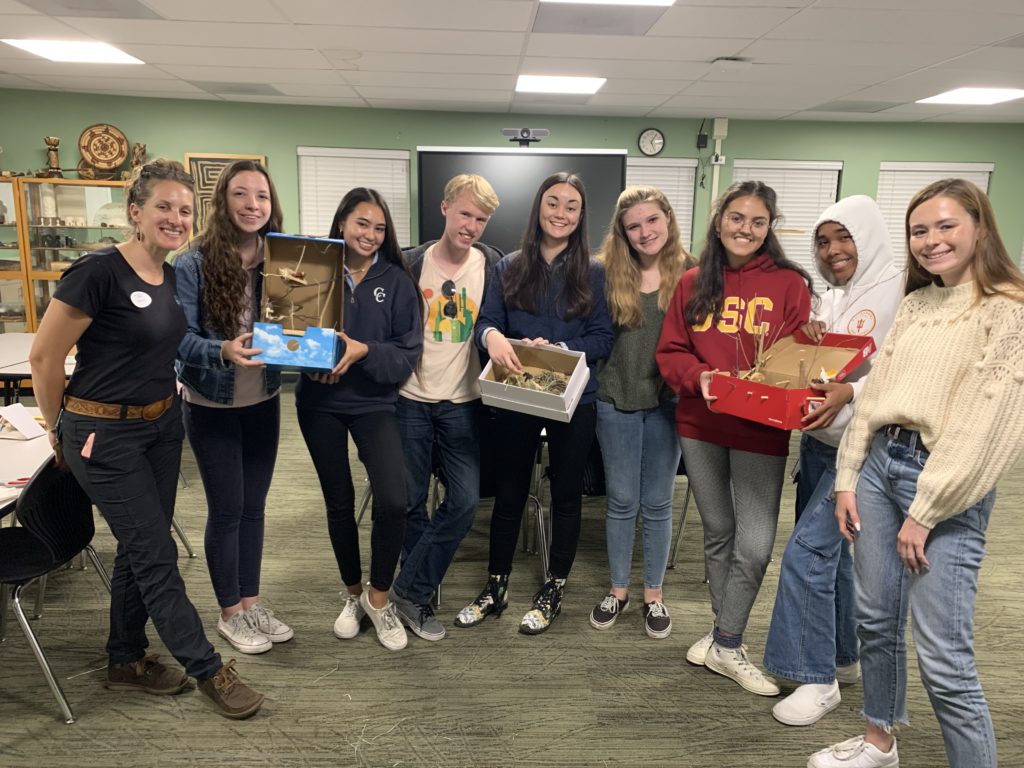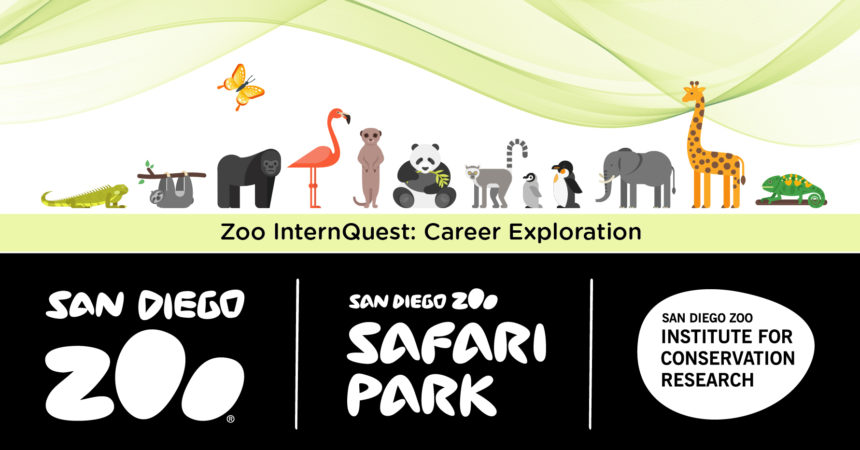Zoo InternQuest is a seven-week career exploration program for San Diego County high school juniors and seniors. Students have the unique opportunity to meet professionals working for the San Diego Zoo, Safari Park, and Institute for Conservation Research, learn about their jobs, and then blog about their experience online. Follow their adventures here on the Zoo’s website!
Have you ever wondered who’s in charge of keeping animals happy at the San Diego Zoo? Well we have, and Jessica Sheftel was here to tell us all about it. Being an Animal Welfare Specialist at the Zoo, Mrs. Sheftel ensures that each animal in managed care elicits the same natural behaviors as they would in their native habitat. She works in the Applied Animal Welfare Department, whose goal is to improve the lives of animals through enrichment, enhancing the lives of animals in managed care by bringing out their natural behaviors. Day to day, Mrs. Sheftel consults with keepers on designing experiences based on the behavioral needs of the animals, and on ways to improve exhibit design. Mrs. Sheftel has branched out and has even consulted other zoos about enrichment. Being an overachiever, she has also gone to Kenya to work with the Kenya Wildlife Service on enrichment for various sanctuaries and orphanages. Unknowing of what her future holds, Mrs. Sheftel is always up for a challenge.

Mrs. Sheftel has had an amazing career path, from working with lexigram (symbols represent words) learning with bonobos in Georgia to working with animal ambassadors in San Diego. Mrs. Sheftel is an alumna of Beloit College in Wisconsin where she majored in Anthropology and Behavioral Studies. After college, she worked with the bonobos in a communications study at a lab at Georgia State University, which also had other primates such as chimpanzees and macaques. One of the most famous of these was an individual named Kanzi, a bonobo that has been the focus of many studies on great ape language and quite an internet sensation. A point of interest was that Kanzi was not the original intended subject; it was actually his mother Matata. While working with Matata, researchers realized she was not interested in learning with the lexigram keyboard (a symbol board that the subject can point to in order to communicate), but that Kanzi was adapting quickly. Like humans, primates such as bonobos often have an easier time learning new things while they are younger. Another bonobo Mrs. Sheftel worked with was a female named Panbanisha. Together they worked on word association and descriptions of events. The team would ask Panbanisha what she thought was going to happen that day and she would reply via lexigram. Mrs. Sheftel and another coworker would then act out Panbanisha’s description of events and record it, showing it to her afterward. While it sounds quite silly, the point of this experiment was to get Panbanisha to make word associations, and remember and communicate about events. After working with these amazing primates, Mrs. Sheftel switched gears and started her career at the San Diego Zoo as a keeper in the Children’s Zoo. The uniting factor in all of Mrs. Sheftel’s jobs is that she gets to achieve her dream of enhancing her animals’ welfare and experiences, physically, mentally and emotionally.

After learning about the importance of Ms. Sheftel’s role at the Zoo, the interns got a chance to step into her shoes and create new forms of animal enrichment for Domingo, the three-banded armadillo! The Spanish word armadillo meaning, “little armored one”, describes the tough outer shell protecting them from predators. There are twenty species of armadillos that inhabit the temperate grasslands, deserts, and rainforests of North, Central, and South America. Armadillos are largely nocturnal mammals that sleep for around sixteen hours per day. When they’re not sleeping, they spend their time digging, and using their sticky tongues to retrieve beetles, ants, and other insects. With this physical and behavioral information in mind, we were tasked with developing an enrichment experience for Domingo. Mrs. Sheftel supplied us with cardboard, paper towels, hay from a tapir’s exhibit, weighted balls, scents, and other exciting items. After our first rendition of an enrichment maze for Domingo, Mrs. Sheftel challenged us to really think about what we learned. Were we getting him to elicit some of his natural behaviors? The answer, not really. By the end of the activity, we had Domingo digging through hay, crawling through tunnels, climbing over and pushing obstacles, and exploring all the new scents within our maze.

Although it may seem that enrichment is particular to exotic animals, it really isn’t! Enrichment is centered around promoting the wellbeing of a living creature, this includes your pets as well. Whether you have a cat, dog, bird, or lizard, enriching their lives can prove to be beneficial and fun for you and them. It can serve as a means to solve issues, such as food being consumed too quickly. By taking used and washed plastic water bottles, you can create a bottle feeder. This works particularly well with canines, who have been known to eat too quickly. The added challenge of getting the food out will not only entertain your pup, but it will also slow down its consumption. As for cats, ledges or play-towers can be made to stand in a more unstable or bendy fashion (without compromising safety) which will encourage the use of muscles and balance. Aside from creating your own enrichment at home, to help support the Zoo in maintaining such experiences you can visit their wishlist online at https://secure3.convio.net/sdzoo/site/Ecommerce?store_id=1221 and donate to your favorite cause!

During our time with Mrs. Sheftel, she reiterated the value of an experience. When we were talking about animal enrichment she told us experiences are the new goal for improving their quality of life, and when asked about career advice she told us about how experiences are the most valuable things for success. For young people seeking jobs like hers in animal care, she said spending more time working with animals is key. Whether that is through internships or working at a veterinarian’s office, the needs and behaviors of animals are best learned through interacting with them directly. Beyond that, Mrs. Sheftel says another key to a successful career is creating and maintaining connections with other people in this community. College professors, fellow students, coworkers, and past bosses are all valuable people to stay in touch with, especially if they work in a similar field. Talent and quality education don’t help as much if you don’t have anyone to help you break into your desired career path. Above all, it is a matter of patience and perseverance, as the animal care industry can be highly competitive. Mrs. Sheftel’s work requires communication skills and out-of-the-box thinking, which are valuable in any job but especially important when dealing with the unique and unpredictable challenges of working with animals.
What Mrs. Sheftel loves most about being an animal welfare specialist is the unpredictable nature of her job! She loves her work because it challenges her, and no day is ever the same. Although Mrs. Sheftel initially worked with primates, recently, her favorite animals to work with have been bears. Mrs. Sheftel enjoys working with these creatures because of how cognitively efficient they are. They can solve the same problems as apes, but in unique ways, displaying their intelligence. Mrs. Sheftel’s favorite memory on the job so far has been seeing the completion of an enrichment experience for the Malayan tigers at the Zoo. In order to bring out their natural behavior of stalking and catching prey, the animal welfare team and keepers strategically incorporated various ways of stimulating natural behaviors. With prints made out of the molds of tapir feet, tapir urine, broken branches, and bird kites that appeared as vultures, Mrs. Sheftel and her team were able to mimic the signs of finding food in the wild. The finale of the experience, was in presenting the tiger with the remains of a lamb disguised by the scent of a tapir on a wooden pallet in the water. It was very rewarding for Mrs. Sheftel to witness the tiger investigate its environment and react how she expected. Bringing out an animal’s natural behavior successfully is always a great feeling.

The work that Jessica Sheftel and her fellow animal welfare specialists do, is both extremely unique and extremely important. Enrichment is what breathes life into the lives of the wide variety of species at the Zoo. What Mrs. Sheftel, the other enrichment specialists, and the keepers at the Zoo create, is an opportunity for the animals to behave naturally, stimulate them mentally and physically, give them choice and control over their environment, and provides the highest quality of care possible for the animals within the collection.
Week Seven
Fall Session 2019


